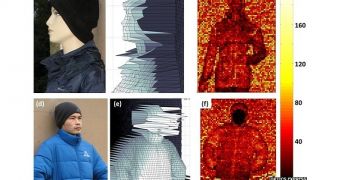One way to get 3D models of objects is to scan them with lasers, infrared lasers in particular, but there are problems when trying to render things that don't reflect laser light well, like fabrics.
Physicists at Heriot-Watt University in Scotland claim to have solved the problem, or at least alleviated it somewhat.
Long story short, they have built a new time-of-flight (ToF) 3D camera system that sweeps a low-power infrared laser rapidly across an object and then records the pixel-by-pixel time between the moment the beam leaves the camera and returns after bouncing off the object in question.
Stationary human-made objects are going to be the main things this system will be used on, as scanning images behind a cluttered foreground (foliage) works particularly well.
That said, the range of half a mile (one kilometer) is a side bonus (millimeter precision). In theory, the range could grow to ten times that, if the team has its way.
Source: The BBC.

 14 DAY TRIAL //
14 DAY TRIAL //